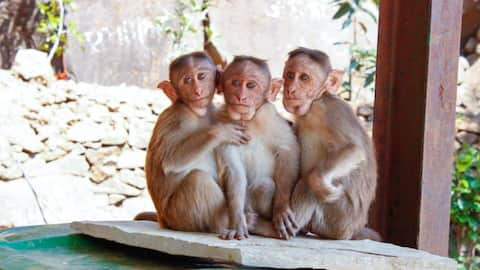World Monkey Day: Revealing some astonishing facts about these creatures
What's the story
Across the globe, a diverse array of monkeys display unique lifestyles, differing in size, shape, and color. Despite these variations, they universally exhibit intelligence and sociability. Monkey Day, observed on December 14, honors these creatures and raises awareness about the threats endangering their existence. Before taking action to safeguard them, let's delve deeper into understanding these fascinating animals.
Fact 1
Not all primates are monkeys
Sometimes, the word "monkey" is used to refer to any member of the primate family, although, in reality, prosimians (such as lemurs, tarsiers, and lorises), apes (such as chimpanzees, gorillas, and humans), and monkeys inhabit entirely distinct branches of the evolutionary tree. One major difference is in their tails. While most monkeys have tails, apes and primates do not.
Fact 2
Monkeys live everywhere
Monkeys are found on every continent except Antarctica and Australia. They have a preference for living in trees in tropical rainforests that are warm and humid. South America's Amazon Rainforest and Central Africa's Congo Basin are two notable locales. On the other hand, certain species of monkeys have proven to be remarkably adaptive, living happily in harsh habitats like snow-capped mountains or dry savannas.
Fact 3
They strengthen their relationships through grooming
For monkeys, picking dirt, bugs, and other detritus off their friends is a sign of respect and affection rather than a sole reflection of their personal hygiene. In addition to maintaining health, grooming practices help monkeys feel more at ease and increase their social ties. Vervet monkeys comb one other's pelts, which fluffs and thickens the fur, according to research findings.
Fact 4
Monkeys choose their sleeping spots carefully
Since monkeys sleep in trees at night, they are often picky about where they choose to sleep. Typically, they select tall, solitary trees whose branches do not touch one another. This is thought to deter predators because it makes it difficult for them to move between branches. In addition, it lessens exposure to insects that bite and protects against mosquitoes that spread malaria.
Fact 5
They have excellent communication skills
Monkeys produce a variety of noise. Gelada baboons, for instance, have at least 20-30 distinct vocalizations. They also communicate with one another using a variety of body language, postures, facial expressions, and gestures, including lip-smacking, screams, grunts, and warning calls. Besides, the howler monkey has the loudest voice among all land animals on Earth. Their sound can sometimes be heard from three miles away.
Fact 6
Monkeys are in danger
Monkeys are in danger due to the threats in their habitat. Illegal wildlife trade and conflicts with humans are common challenges they grapple with. However, we need to understand that their survival is not just their own concern; it is a shared responsibility for all of us. The disappearance of these playful guardians would reflect a failure in our role as caretakers of Earth.
